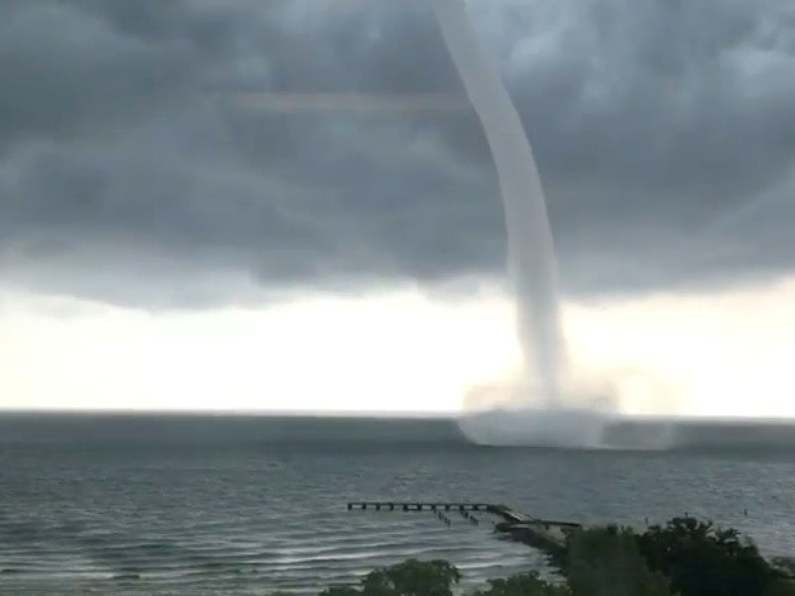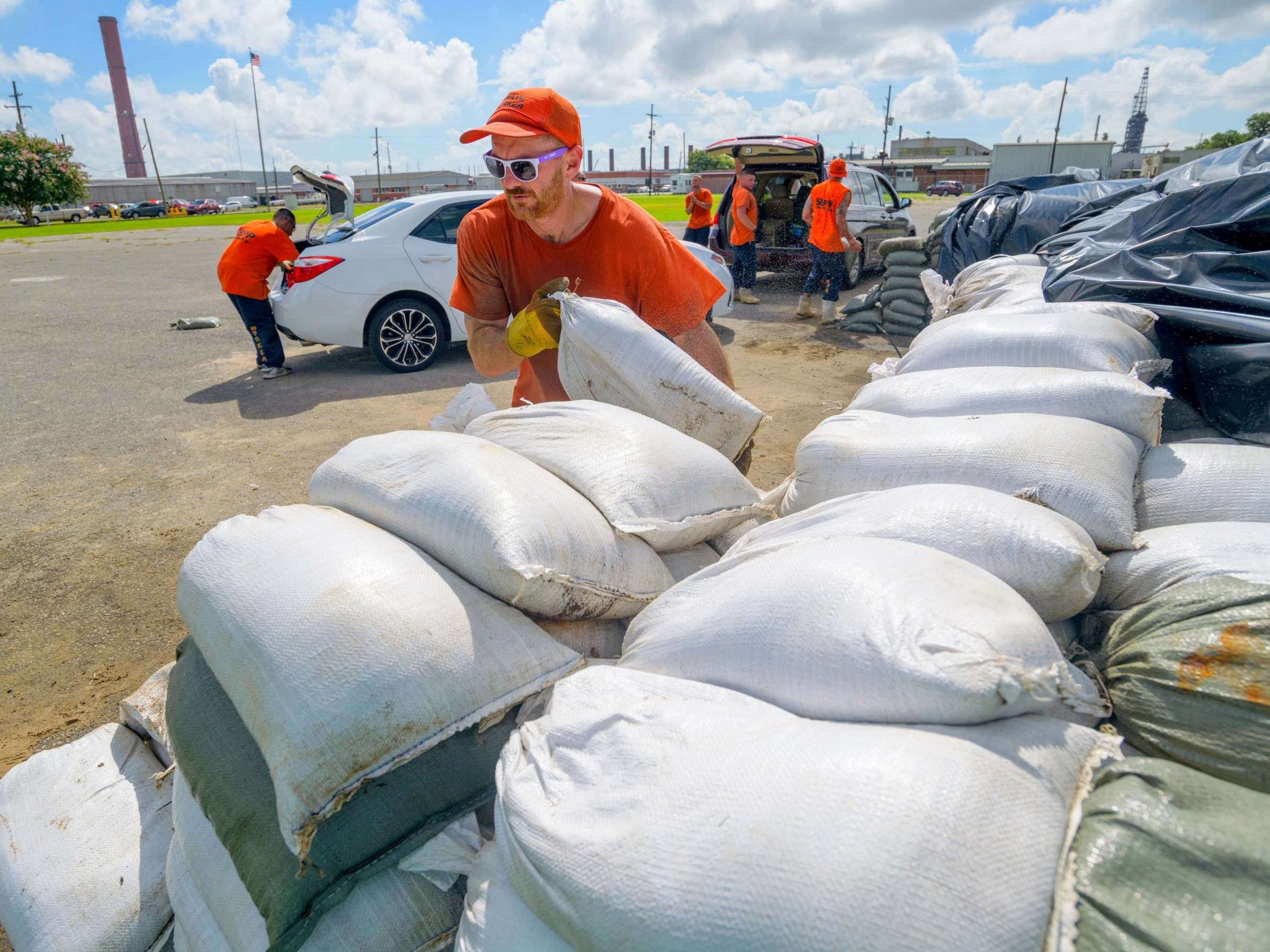Tropical Storm Barry: Flooded New Orleans set to be battered by likely hurricane
Donald Trump declares federal emergency for Louisiana as state braced for epic drenching

Tropical Storm Barry hit the Louisiana coastline on Friday morning, as the state braced itself for potentially record-breaking rainfall and widespread flooding in the days ahead.
High-water vehicles and helicopters were put on standby by National Guard troops and rescue crews stationed across the state, and drinking water and blankets were made ready for distribution.
Donald Trump has declared a federal emergency for Louisiana, authorising the Department of Homeland Security and the Federal Emergency Management Agency to coordinate relief efforts.
With the storm expected to blow inland by early Saturday, forecasters warned Storm Barry could develop into the first hurricane of the Atlantic season.
Some parts of the state could get as much as 25in (63cm) of rain, according to the National Hurricane Centre.

The downpours are expected to pose a severe test of the improvements made to New Orleans’ flood defences since the city was devastated by Hurricane Katrina in 2005.
The storm could give New Orleans its worst drenching in decades, possibly even eclipsing the city’s wettest day on record, 12.24in (32 cm), in 1995, forecasters said.
Some low-lying roads near the coast were already covered with water on Friday morning as the tide rose and the storm pushed water in from the Gulf of Mexico.
“There are three ways that Louisiana can flood: storm surge, high rivers and rain,” Louisiana governor John Bel Edwards said. “We’re going to have all three.”
Mr Edwards said that authorities do not expect the river to spill over its levees, but cautioned that a change in the storm’s direction or intensity could alter that.
The Mississippi River is already running abnormally high because of heavy spring rains and snow melt upstream, and the ground around New Orleans is soggy because of an 8-inch drenching on Wednesday.
About 10,000 people in Plaquemines Parish on Louisiana’s low-lying south-eastern tip were ordered to evacuate on Thursday.

Among the last to leave were 65-year-old Clarence Brocks and his family. Mr Brocks has been evacuated many times before and had to rebuild after Katrina wiped out his home. But he said he wouldn’t want to live anywhere else.
“I was born and raised here. This is all I know,” the Air Force veteran said. “I’ve been all over the world and guess where I want to be at? Right here.”
Kaci Douglas and her 15-year-old son, Juan Causey, were among dozens filling sandbags at a fire station in Baton Rouge. She planned to put the bags around the door of her townhouse. “I told my son it’s better to be safe than sorry,” she said.
LaToya Cantrell, the mayor of New Orleans, said the pumping system that drains the city’s streets was working as designed after the rain and flash floods earlier this week but that Barry could dump water faster than the pumps can move it.
“We cannot pump our way out of the water levels ... that are expected to hit the city of New Orleans,” she warned.
However, the city did not plan to order evacuations because Barry was so close and because it was not expected to grow into a major hurricane.
Officials instead advised people to keep at least three days of supplies on hand and to keep their neighbourhood storm drains clear so water can move quickly.
Hurricane Katrina caused catastrophic flooding in New Orleans 14 years ago and was blamed altogether for more than 1,800 deaths in Louisiana and other states, by some estimates.
In its aftermath, the Army Corps of Engineers began a multibillion-dollar hurricane-protection system that isn’t complete. The work included repairs and improvements to some 350 miles of levees and more than 70 pump stations that are used to remove floodwaters.
Additional reporting by Associated Press
Join our commenting forum
Join thought-provoking conversations, follow other Independent readers and see their replies
Comments